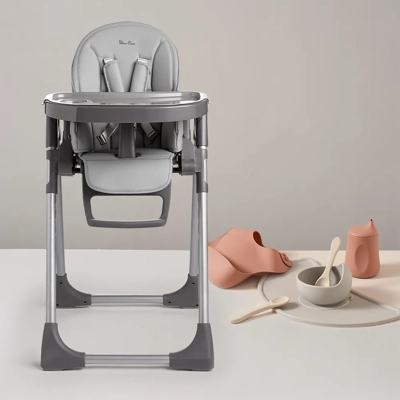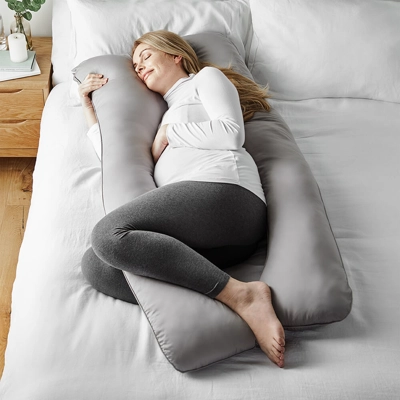
How to express breastmilk for your baby
Breastfeeding peer supporter, Kat’s top tips for getting started
Author
Kat Gemmell
There are lots of reasons a mum may choose to exclusively express their breastmilk, and this is how I chose to feed my second baby when he came along.
He was almost exclusively expressed breastmilk fed for the first 7 months. Some will say expressing is the worst of both worlds – it’s time consuming, you have more washing up, it requires a huge amount of dedication and it’s expensive.
For some, exclusively expressing will also be the best of both worlds. Due to previous breastfeeding trauma, I wanted to ensure my second was getting plenty of milk, while still giving him all the benefits of breastmilk. I also knew that I would need to spend some time away from him at some point in his first year, as my dad was terminally ill, and I wanted to support him and my family as much as possible.
If you have chosen to exclusively express, or perhaps stumbled across it with your newborn, there are a few tips to get started.
Equipment checklist
- A hospital grade breast pump – This should be your main breast pump and what you do the majority of expressing with.
- Breast shield sizing – The breast shield is the cone shaped part that you put on your breast. The tunnel which your milk will flow down into the bottle comes in various diameters – we are all different sizes! It is important to get the right size to maximise your milk output.
- Spare parts – The ducts and tubing on your pump will need to be replaced periodically. Once you are happy with your pump set up, it’s worth having a few spare parts to hand.
- Bottles – You will need bottles to feed baby your milk.
- Steriliser – As breastmilk is sterile, some will say that you don’t need to sterilise your equipment or bottles. Personally, I was happier sterilising everything, and used a cold-water system. After washing everything up, I rinsed and popped into the bucket until needed again.
- Breast pads – You are still breastfeeding, and leaks can happen! I opted for reusable breast pads.
- Nipple cream – You can experience some chafing on your nipples (which is also a sign your breast shield isn’t quite right). Putting a little cream on before and after expressing can help reduce any trauma.
- Pumping bra – This is a special bra that has holes in to hold the breast shields onto your breasts, leaving you (somewhat) hands free. While you won’t be able to do any cartwheels or move freely, you will be able to drink or eat while expressing.
- Breastmilk bags – For storing your expressed milk.
- A fridge to store excess milk – You may need a freezer if you have a lot of excess milk.
Getting started
If you are expressing from birth, here are my tips for getting started:
- Hand express syringes of colostrum prior to birth – speak to your midwife about the best time to start, as this can differ depending on your pregnancy. If you plan to give birth in hospital, check the ward will have somewhere to store your expressed colostrum when you have baby. When you have expressed a syringe, label it with your name, the date and time it was expressed, and pop it in the freezer in a sterile bag. Take your colostrum with you if you are giving birth in hospital. Pop the syringes in a freezer bag with ice packs to keep them frozen, and pass to your midwife when you are booked into the ward.
- When baby is born, begin (or continue) hand expressing your colostrum – your midwife will be able to show you how to syringe feed baby, although some hospitals will have a policy that only midwives or health care workers can syringe feed. Be aware that if baby has any medical concerns, they will require full feeds from birth – your expressed colostrum will be able to be given too, but will not be enough to solely feed baby. You can either give bottle feeds alongside your colostrum, or directly breastfeed baby.
- In the hospital I had my boys, expressed colostrum syringes were allowed for the first 48 hours while getting breastfeeding established if there were no medical concerns. It wasn’t enough of a feed to be the sole source of food. With my first, I gave syringes while establishing feeding. With my second I was intending to exclusively express, so gave colostrum syringes alongside formula feeds. I expressed while he had a bottle of formula.
- You can gradually move over to your expressed breastmilk as the amount you express increases. You can either collect all your milk and feed as one feed, swapping out the formula feeds for bottle feeds as you express more. Alternatively, you can add your expressed breastmilk to baby’s formula bottle – so if baby is having a 30ml bottle, you may do 10ml formula, and 20ml expressed breastmilk.
- You will need to express every 2-3 hours, and should see the quantities increasing quickly. You can use a breast pump right away, however be aware that the colostrum can get ‘lost’ in the breast pump parts, so you may prefer to hand express at first. When I expressed for my second, I hand expressed for the first 24 hours, then moved to using a double breast pump.
- When moving to the breast pump, use the ‘let down’ setting until your milk is flowing, then move onto the slower, stronger setting. Some pumps do this automatically, others can be adjusted manually. Aim to express for around 20 minutes, stopping 2-3 minutes after your milk has stopped flowing. Using a double breast pump will halve the time you are expressing.
- Getting a ‘stash’. Firstly, you don’t *need* a stash. Keep on top of your expressing schedule as best you can, and express what you can. If you do have surplus milk, store it in a breastmilk bag, and label it with the date and time it was expressed. Breastmilk can be stored for 6 hours on the side at room temperature, 6 days in the back of the fridge (not the door) and 6 months in the freezer. Always put the newest milk at the back and use oldest milk first.
- Some mums will be able to fully feed breastmilk, others will always need to supplement with formula no matter how much they pump or what pump they use. A breast pump isn’t as effective at removing milk from your breasts as a baby is, and some will respond better to the pump than others. If you feel you aren’t expressing enough with the pump, try hand expressing – I struggled massively with hand expressing, but my friend could fill a bottle in the time it took me to sort the pump out!
Establishing a routine
There is no perfect way to incorporate expressing into life with your newborn, and you will find a way that works for you.
The routine I fell into was:
- Baby would wake for a feed. As I double pumped, I stored one bottle in the fridge, and kept the other on the side for the next feed.
- Feed baby, change nappy then settle back down.
- Express for 20 minutes, keep one bottle of milk with cap on ready for next feed, and put extra bottle in fridge.
- Repeat every 3 hours (express 8-12 times in 24 hours) – I tried to stick to a schedule of 3, 6, 9, Noon, 3, 6, 9, Midnight. If baby wanted a feed in between that schedule (which is very normal baby behaviour), my husband would do that feed in the night. If I was very tired, my husband would feed baby while I expressed to reduce how long I was awake.
- A 3-hour gap doesn’t sound so bad, until you realise it is 3 hours from the start of the feed! If baby feeds every 3 hours, the clock resets when the feed starts.
Dropping sessions as your milk supply establishes
Expressing 8-12 times every 24 hours is essential for establishing your milk supply. Once your supply is established, usually around the 6-week mark, you can start to drop expressing sessions and stretch the time a little in between. Dropping a session should be done gradually to avoid mastitis. To drop a session, choose which one you would like to drop and begin leaving it a little longer between sessions each day. Eventually, the session you would like to drop will ‘merge’ into the next one.
Everyone will want to drop the middle of the night session, however this is when your prolactin levels are highest, you produce the most breastmilk at night. When your supply is established you can start to stretch the time between your night sessions, but try not to leave more than 5 hours between. Your new schedule might look like:
Pump 1: 5am
Pump 2: 8am
Pump 3: 11am
Pump 4: 2pm
Pump 5: 5pm
Pump 6: 8pm
Pump 7: Midnight
When you want to drop another feed, your schedule might change to this:
Pump 1: 5am
Pump 2: 9am
Pump 3: 1pm
Pump 4: 5pm
Pump 5: 9pm
Pump 6: Midnight
If you notice the amount you express has decreased when dropping a session and you would prefer to maintain your supply, you may want to add it back in. You may also want to look at ‘power pumping’ to build your supply back up.
Power pumping – The last tip I could give to any mum exploring the world of exclusive expressing. Power pumping can be used to mimic a baby cluster feeding which can help to increase your milk supply.
To power pump:
- Do this of an evening, although any time is fine
- Do your usual pumping session, then rest for 10 minutes
- Pump again for 10 minutes, rest for another 10 minutes
- Pump again for 10 minutes
Stopping expressing
Before you know it, you will reach a time where you want to stop expressing. To stop expressing, you need to tell your body you no longer need it to make as much milk. To do this:
- Stop expressing as soon as your milk has stopped flowing
- Begin reducing the time you spend expressing by a few minutes each session over the course of a few weeks. However, don’t stop expressing while your milk is flowing, as this may lead to a blocked duct that can develop into mastitis.
- Stretch the time between expressing sessions by 15 minutes every few days. Eventually, your sessions will merge, and with the shorter expressing sessions, your milk supply will reduce.
- Be led by your body – if your breasts don’t feel ‘full’ and you are not leaking when it’s time to express, wait a bit longer. You may find you naturally drop expressing sessions this way until you no longer need to express.
- Give yourself a big pat on the back for your hard work and dedication! Hopefully baby will let you get a nice stretch of sleep as a reward!

Author
Kat Gemmell
Kat Gemmell joined our car safety team with over a decade of experience supporting parents to choose, fit and use their child car seats safely. She has worked for a national child seat campaign, provided product training for child seat manufacturers, and ran online information websites to support parents in making a truly informed choice. As well as her background in car safety, Kat also spent many years as a breastfeeding peer supporter, having worked for a local feeding charity as well as the maternity ward her children were born in.





